
Guests
- Vivian Vázquez Irizarryco-director and co-producer of the documentary Decade of Fire.
- Gretchen Hildebranco-director and co-producer of the documentary Decade of Fire.
The new documentary “Decade of Fire” looks back at the history of a crisis that unfolded in New York City in the 1970s, when the South Bronx faced a near-constant barrage of fires that displaced almost a quarter-million people and devastated an entire community. Co-directors and producers Vivian Vázquez Irizarry and Gretchen Hildebran tell the story of the government mismanagement, landlord corruption and redlining that lit the Bronx ablaze. They also describe how the community fought back to save their neighborhoods. The film airs next week on PBS.
Transcript
AMY GOODMAN: This is Democracy Now! I’m Amy Goodman, with Juan González.
JUAN GONZÁLEZ: Decade of Fire. That’s the name of a new documentary that takes us back to the 1970s, when the Bronx faced a near-constant barrage of fires that displaced almost a quarter-million people and devastated an entire area. The Bronx was burning. But who was lighting the match? Decade of Fire tells this story. This is the trailer.
VIVIAN VÁZQUEZ IRIZARRY: We grew up in rubble. We grew up with burnt-out decay all over us. The South Bronx was burning down around us, and nobody seemed to know why.
UNIDENTIFIED: Everything south of the Cross Bronx Expressway, they just let it burn, and nobody gave a damn.
UNIDENTIFIED: And all of a sudden, neighborhoods just went fwoosh, gone.
UNIDENTIFIED: Nobody’s aware of the fact that we’ve got a city dump right here in the backyard.
VIVIAN VÁZQUEZ IRIZARRY: How could city government allow this to happen? Who was in charge? Why? The story we were told, the story the whole world was told, was that the fires were somehow our fault. But we didn’t burn the Bronx. We were the ones who saved it.
HETTY FOX: I said, “No, wait a minute. I have to make my move right now.”
LEON POTTS: The reason we’re trying to do all these things is to show an example to the rest of the people in the neighborhood that if you just try, you could make a lot better neighborhood.
UNIDENTIFIED: If no one else wants to fight, we’ll fight. And I’m sure that I could get all the women in the Bronx to go out there and fight.
RONALD REAGAN: The federal government can then come in and wave a wand and do this!
UNIDENTIFIED: We try to get money from the city to renovate a building? Got red tape. Two, three years maybe. Two, three years, there might not be a Kelly Street.
VIVIAN VÁZQUEZ IRIZARRY: This story is not just about the Bronx. There are places like this in every major city in America, places that everyone has given up on, except for us. We came from this so-called terrible place, but we would never leave it behind.
AMY GOODMAN: Decade of Fire airs next week on PBS. For more, we’re joined by the two guests, here in the studio, who made this film happen. Vivian Vázquez Irizarry is the film’s co-director and co-producer, born and raised in the Bronx. She describes her community burning, in part through her own family’s story. And Gretchen Hildebran is co-director and co-producer of Decade of Fire, as well.
Vivian, let’s begin with you. The poignant story of your family and then what happened in the Bronx, tell us that story.
VIVIAN VÁZQUEZ IRIZARRY: So, I grew up in the South Bronx during the 1970s. We had a great community. You know, we thought it was normal. We thought it was natural. After — we thought “it” meaning the fires. Right? Living in the destruction. That’s how we grew up. As I got older, I began to realize that something was really wrong, and I began to work with young people and decided, “Let’s teach history to young people about the Bronx,” and realized that, wait a minute, something was wrong. We were always told that it was our fault, for the destruction of the Bronx. That’s the narrative we’ve always been given, that it was the people of the South Bronx who burned it.
AMY GOODMAN: Eighty percent of the Bronx burned down?
VIVIAN VÁZQUEZ IRIZARRY: Eighty percent of our housing stock was destroyed. And we also experienced 40 fires, on average, a day and night. You talk to people who grew up back then, and they will tell you they still remember the smell. And they still remember what they needed to do in case there would be a fire — putting shoes out near the front door, maybe sleeping with your shoes on, maybe making sure that people in the neighborhood were always aware that any minute now there would be a fire.
JUAN GONZÁLEZ: And, of course, many of those were arson fires, that the landlords themselves set to be able to collect insurance money, because they weren’t getting enough income from the rents. You also focus on the reduction of fire services to the community by the city government at the time of New York’s financial crisis. Could you talk about that?
VIVIAN VÁZQUEZ IRIZARRY: Yes. We talk about the fires, but we also reveal what led to those fires. And it wasn’t that all of a sudden the Bronx began to burn. You know, we reveal that we experienced redlining, which really starved the community of resources to support buildings that were already pretty old. They were already, you know, in bad shape. We talk about urban renewal, which crowded over 150,000 people into the South Bronx. We talk about the cuts of services, including firehouses. All of those factors led to the fires. So, we characterize the fires as the vulture effect that occurred with policies that were made, humanly made, to the community beginning in the 1950s and ’60s.
JUAN GONZÁLEZ: And when you talk about the 150,000 people that were poured into the South Bronx, they were being displaced from Manhattan as Manhattan was being gentrified by Robert Moses and Herman Badillo, and they were being pushed into the South Bronx, right?
VIVIAN VÁZQUEZ IRIZARRY: Correct, correct. You know, these people, who were already poor, became displaced into neighborhoods, that created even a greater poverty effect for the community.
AMY GOODMAN: Let’s go back to the documentary Decade of Fire.
UNIDENTIFIED: We used to tell our landlord, “Don’t abandon us, because we can’t live anywhere else.” My children were all born here, and we’re trying to get our lives together and make something better for them.
UNIDENTIFIED: The sense that I get, and there’s this internalized sense of guilt and of shame for not being able and not working hard enough or not having what it takes to elevate oneself out of that circumstance.
VIVIAN VÁZQUEZ IRIZARRY: We did blame ourselves, because that’s what we internalize, right? Because we’re living in it. “Why are we doing this to ourselves?” You know, it was complicated. And it’s awful, because I think that, in many ways, we still blame ourselves.
AMY GOODMAN: And another clip from the documentary Decade of Fire.
VIVIAN VÁZQUEZ IRIZARRY: Our families were setting roots down here, but our neighborhoods were being targeted by government policies based on race. It started with redlining.
JOE FLOOD: Redlining. When this first starts in the 1930s, any neighborhood that has 5, 10% black or Puerto Rican population is seen as a declining neighborhood. The federal housing agencies, banks, insurance companies, they start taking maps and literally drawing lines around them based on which neighborhoods are a good risk and which ones are bad. If a neighborhood had a red line drawn around it, it’s a bad bet. Don’t give a loan there. Don’t give out homeowners insurance, fire insurance.
JUAN GONZÁLEZ: That was another excerpt from Decade of Fire. Gretchen Hildebran, how did you get involved in this film, and why did you feel it was so important to make it?
GRETCHEN HILDEBRAN: Thank you so much for having us today. So, Vivian and another co-producer of ours, Julia, came to me shortly after I had moved to New York. So, I’m not a New Yorker. And I was really stunned to start hearing this story of what happened in the Bronx, and also felt really fortunate to be able to meet Vivian and begin to start working with her and her community, just sitting around talking about, you know, what life was like back in the ’70s, and for positive and negative.
And really, as we got further into it, I think one of our main goals with this was to try and break open policies like redlining and make them really accessible to people, because we really see a direct connection between those policies, you know, that have been going on since the 1930s, and the cities we live in today, and really wanting to give the policy, open it up to people as a tool, as a way to understand why we have such a crisis of displacement and gentrification in cities today.
JUAN GONZÁLEZ: And, Vivian, I wanted to ask you — Charlotte Street in the South Bronx became the symbol of urban decay in the ’70s and ’80s. Jimmy Carter went there. Ronald Reagan went there. They were all talking about rebuilding these areas. But people stayed, like you, and the renaissance of the Bronx right now is due to those people who stayed behind.
VIVIAN VÁZQUEZ IRIZARRY: So, in the film, you see the real creative resistance of people that stayed and fought and sacrificed their lives, everything they had, to save their building, their block, their neighborhood. You have people like Ramón Rueda from the People’s Development Corporation, who automatically saw that we had the resource of human beings and empty buildings: “Let’s just bring those two together and figure out how we can rebuild the housing.” You had the Potts family and Robert Foster and Hope Foster, who, together with folks from Banana Kelly, decided that they were going to rebuild an entire block. You had women like Hetty Fox, who came from California, actually, after visiting her father, and decided that she was going to stay and save her neighborhood and prevent her block from burning. Hers is one of the the only blocks in the South Bronx that did not burn, because she was there.
AMY GOODMAN: And how are these residents being protected today?
VIVIAN VÁZQUEZ IRIZARRY: So, today, we’re not experiencing the massive destructive force of fire physically, but the conditions of displacement and the threat of displacement in the South Bronx is grave. We are now very afraid of displacement because of gentrification. So it’s those same neighborhoods, and it’s not just in the South Bronx, but if you look at all those neighborhoods across the country that were redlined and were starved of resources back in the '60s and ’70s, they're the same neighborhoods that are being gentrified today and where people cannot afford to pay their rent, where people are being evicted, where people are being harassed by landlords and are being forced to move out.
AMY GOODMAN: We’re going to go to Part 2 of this discussion after the show. We’re going to post it online at democracynow.org. Vivian Vázquez Irizarry and Gretchen Hildebran, co-directors of Decade of Fire. The documentary airs beginning Monday on PBS Independent Lens.
That does it for our show. Democracy Now! currently accepting applications for paid six-month internships here in New York. Go to democracynow.org for details. I’m Amy Goodman, with Juan González. Our website, democracynow.org.

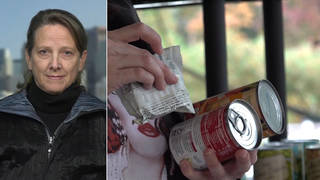
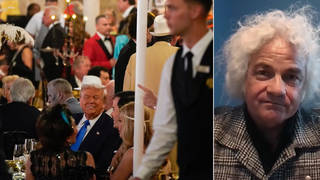
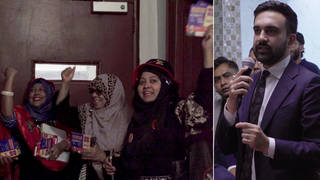
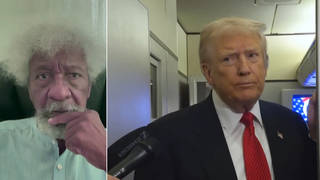





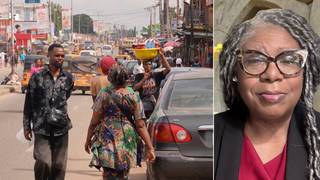
Media Options